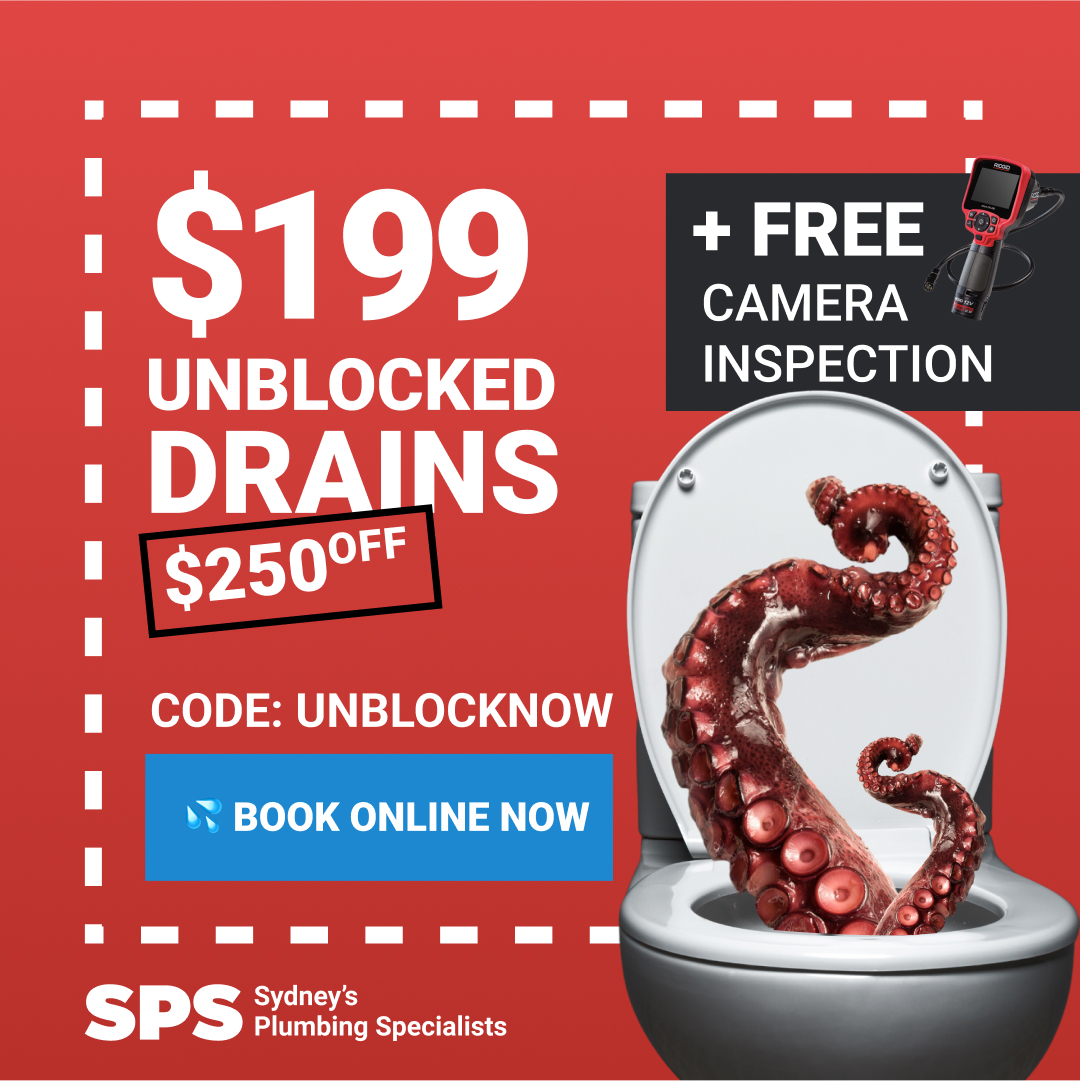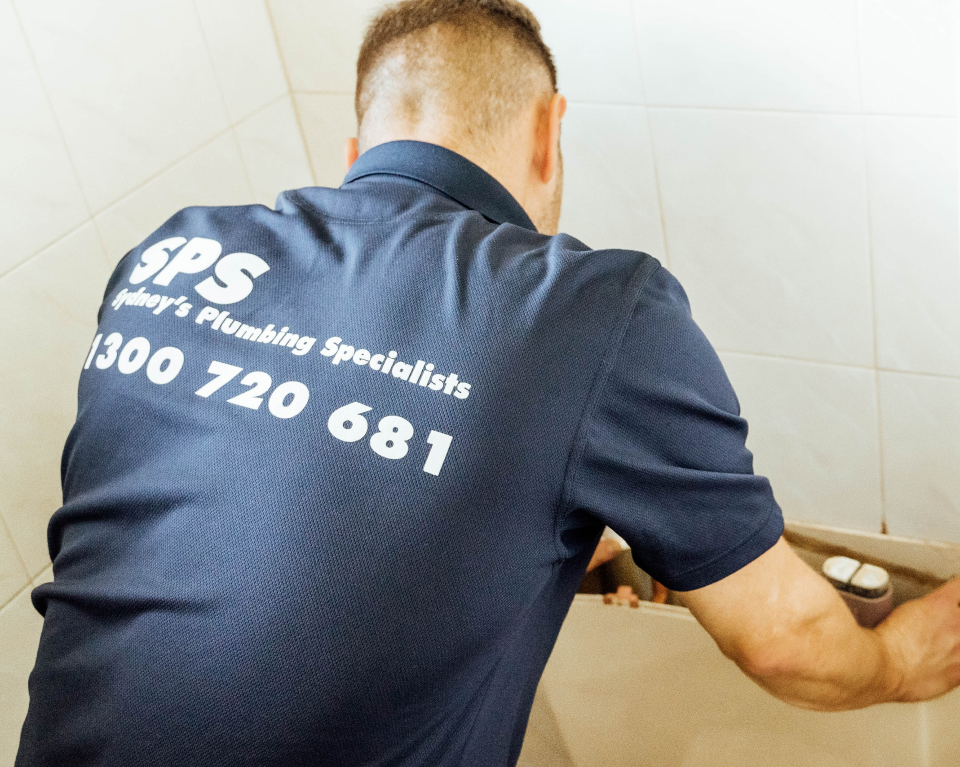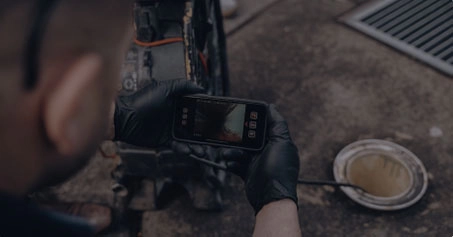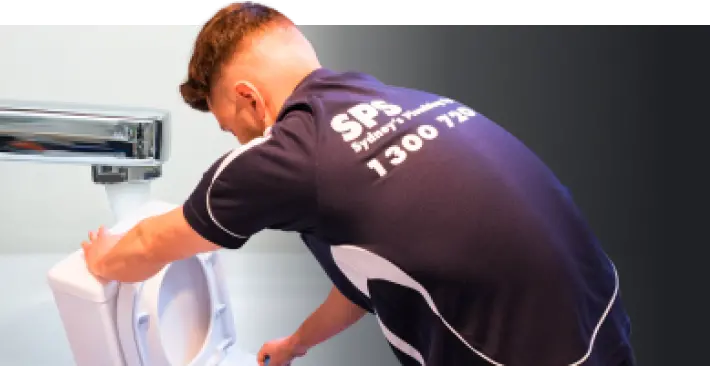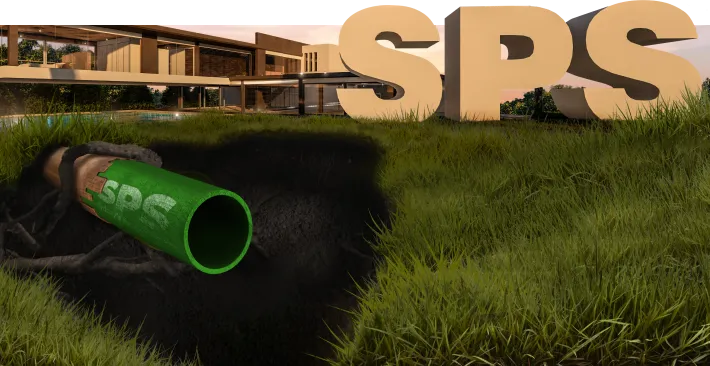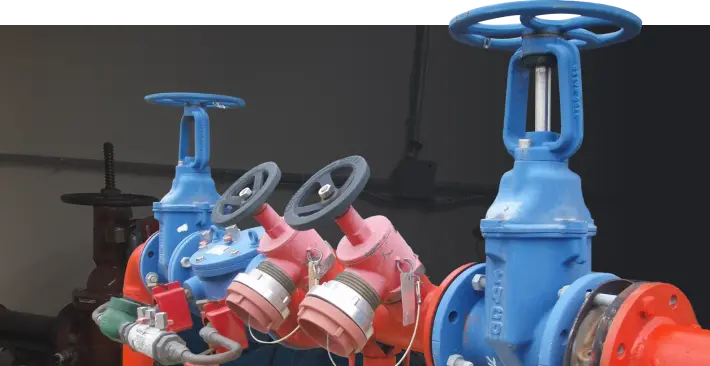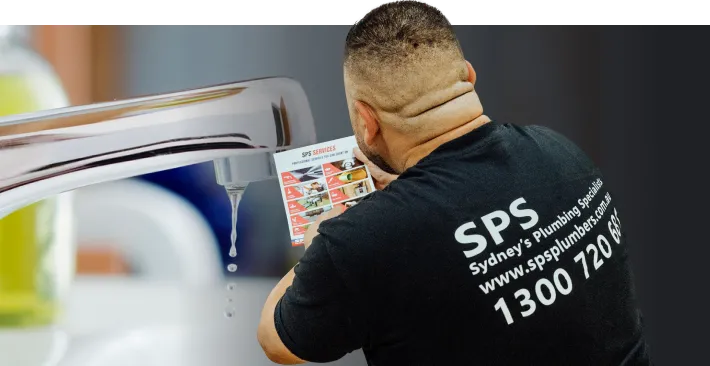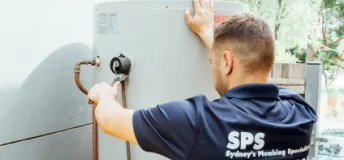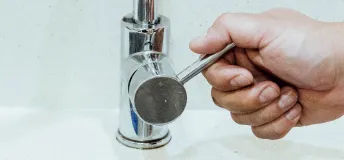Table of Contents
- Causes Of A Blocked Drain
- Foreign Objects
- Accumulation of Grease and Fat:
- A build-up of Scale and Mineral Deposits
- Structural Issues
- Improper Flushing
- Poor Drainage Design
- Weather Conditions
- Signs Of A Blocked Drain
- Foreign Objects
- Accumulation of Grease and Fat:
- A build-up of Scale and Mineral Deposits
- Structural Issues
- Improper Flushing
- Poor Drainage Design
- Weather Conditions
- How to Clear a Blocked Drain: 8 Effective Methods
- Boiling Water
- Baking Soda and Vinegar
- Plunger
- Drain Snake or Wire Hanger
- Dish Soap and Hot Water
- Wet and Dry Vacuum
- Caustic Soda
- Hydro Jetting
- Enzyme Cleaners
- Methods Of Prevention
- Call a Professional Plumber
- Conclusion
Causes Of A Blocked Drain
A blocked drain can be caused by various factors, including:
-
Foreign Objects: One of the common causes of blocked drains is the presence of foreign objects that get lodged in the pipes. This can include items such as hair, soap scum, food debris, sanitary products, baby wipes, paper towels, or tree roots infiltrating underground pipes.
-
Accumulation of Grease and Fat: When grease and fat are poured down the drain, they can solidify and accumulate over time, causing a blockage. This is particularly common in kitchen drains where cooking oils, fats, and food scraps are often disposed of improperly.
-
A buildup of Scale and Mineral Deposits: Hard water contains minerals such as calcium and magnesium that can accumulate inside the pipes over time, forming a hard layer called scale. Scale buildup can narrow the pipe diameter and restrict the flow of water, eventually leading to a blockage.
-
Structural Issues: Damaged or collapsed pipes can cause blockages by restricting the flow of water or trapping debris. This can occur due to ageing pipes, ground movement, or external factors such as construction work.
-
Improper Flushing: Flushing inappropriate materials down the toilet can lead to blockages in the drainage system. Items like wet wipes, cotton balls, dental floss, or excessive toilet paper can accumulate and clog the pipes.
-
Poor Drainage Design: In some cases, the original design or installation of the drainage system may be flawed, leading to frequent blockages. Insufficient pipe diameter, improper slope, or inadequate ventilation can contribute to drainage issues.
-
Weather Conditions: Heavy rainfall or flooding can overwhelm the drainage system, causing blockages due to an excessive volume of water or debris being washed into the drains.
It's important to note that these are just a few common causes, and there can be other factors specific to the plumbing system or environment that contribute to blocked drains. Regular maintenance and proper usage can help prevent many of these issues.
Signs Of A Blocked Drain
Here are some signs that indicate a blocked drain:
-
Slow Draining: If you notice that water is draining slowly from sinks, showers, or bathtub drains, it could be an indication of a blockage. The water may take longer than usual to empty out, or it may pool around the drain.
-
Gurgling Noises: When there is a blockage in the drain, you may hear gurgling or bubbling sounds coming from the pipes. This happens when air bubbles try to escape through the trapped water in the blocked area.
-
Unpleasant Odors: Foul smells emanating from drains, toilets, or sinks can be a sign of a blocked drain. The trapped debris and stagnant water provide an ideal environment for bacteria to thrive, resulting in unpleasant odors.
-
Overflowing or Backing Up: If water overflows or backs up from one fixture when you use another, it indicates a blockage in the drainage system. For example, flushing the toilet may cause water to back up in the bathtub or water may overflow from a sink when the dishwasher is running.
-
Multiple Clogged Fixtures: When several fixtures in your home are experiencing drainage issues simultaneously, such as sinks, toilets, or showers, it suggests a blockage in the main sewer line. This is a more severe type of blockage that requires immediate attention.
-
Water Stains or Damage: Blocked drains can lead to water seepage or leakage, causing water stains on walls, ceilings, or floors near the affected area. This could be a result of pipes being damaged or cracked due to increased pressure from the blockage.
-
Rising Water Levels in Toilet Bowl: If the water level in your toilet bowl rises higher than usual or fluctuates, it may indicate a blockage in the toilet trap or the sewer line.
If you notice any of these signs, it's important to address the issue promptly to prevent further damage to your plumbing system. Consulting a professional plumber is recommended to accurately diagnose and resolve the blockage.
How to Clear a Blocked Drain: 8 Effective Methods
A blocked drain can be a major inconvenience, causing unpleasant odours, slow drainage, and even potential water damage. Fortunately, there are several methods you can employ to clear a blocked drain and restore proper functioning. In this article, we will explore ten different techniques that are proven to be effective in clearing blocked drains.
From simple DIY methods using household items to more advanced approaches, we will cover a range of solutions that can help you tackle this common household issue.
Boiling Water:
One of the easiest and most accessible methods to clear a blocked drain is by using boiling water. This method works well for minor clogs caused by grease, soap residue, or small debris. Here's how to do it:
- Boil a kettle or pot of water.
- Slowly pour the boiling water directly into the drain.
- Allow the hot water to work its way through the pipes for a few minutes.
- If the water does not immediately clear the clog, repeat the process two or three times.
Boiling water helps dissolve greasy substances, allowing them to flow more easily through the drain. It is important to note that this method is not suitable for drains made of PVC pipes, as the high temperature can damage them.
Baking Soda and Vinegar:
Another popular and environmentally friendly method for clearing blocked drains is by using a combination of baking soda and vinegar. The chemical reaction between these two ingredients helps break down organic matter and dislodge minor blockages. Follow these steps:
- Pour a pot of boiling water down the drain to remove any loose debris.
- Sprinkle half a cup of baking soda into the drain.
- Pour half a cup of vinegar down the drain.
- Immediately cover the drain with a plug or cloth to contain the reaction.
- Allow the mixture to fizz and work for about 15 minutes.
- Flush the drain with another pot of boiling water.
This method is effective for removing minor clogs and combating unpleasant odours caused by organic matter. However, it may not be as effective for severe blockages or non-organic materials like hair or solid objects.
Plunger
Using a plunger is a tried-and-true method for clearing blocked drains, especially when dealing with toilets or sinks. It creates pressure that can dislodge obstructions and restore proper drainage. Here's how to use a plunger effectively:
- Fill the sink or toilet with enough water to cover the plunger's head.
- Position the plunger over the drain and ensure a tight seal.
- Apply firm, upward and downward pressure on the plunger to create suction.
- Repeat this motion several times, then remove the plunger to check if the water drains freely.
For sinks, you may need to cover the overflow hole with a wet cloth or tape to ensure effective suction. If the plunger method fails to clear the blockage, you may need to try another technique or seek professional assistance.
Drain Snake or Wire Hanger:
For more stubborn blockages, using a drain snake or a wire hanger can be effective. These tools allow you to physically remove the clog by dislodging or hooking it. Follow these steps:
- Straighten a wire hanger or obtain a drain snake.
- Insert the wire hanger or drain snake into the drain, pushing it as far as possible.
- Rotate or wiggle the tool to break up the clog or hook onto it.
- Slowly pull the wire hanger or drain snake out of the drain, bringing the clog with it.
This method is particularly useful for removing hair clogs or solid objects obstructing the drain. Exercise caution not to push the clog further down the pipe, as this may worsen the blockage.
Dish Soap and Hot Water:
A combination of dish soap and hot water can help break down grease and facilitate the clearance of minor clogs. Here's how to use this method:
- Squirt a generous amount of dish soap into the blocked drain.
- Boil a kettle or pot of water.
- Slowly pour the hot water down the drain, allowing it to mix with the dish soap.
- Leave the mixture to work for a few minutes.
- Flush the drain with more hot water.
The dish soap helps lubricate the pipe, making it easier for the clog to slide down and clear the drain. This method is most effective for grease-related blockages in kitchen sinks.
Wet and Dry Vacuum :
If you have access to a wet and dry vacuum, you can use it to clear a blocked drain. This method works by creating suction to dislodge the clog. Follow these steps:
- Set the vacuum to wet mode.
- Cover the vent on the vacuum with a cloth or towel to create a seal.
- Place the vacuum hose over the drain, ensuring a tight fit.
- Turn on the vacuum and let it run for a few seconds to create suction.
- If the clog is dislodged, you will hear a change in the sound of the vacuum or see the water draining.
This method is effective for removing smaller clogs, but it may not be suitable for larger or more stubborn blockages. Additionally, ensure that the vacuum's motor is protected from any water or debris.
Caustic Soda :
Caustic soda, also known as sodium hydroxide, is a powerful chemical that can dissolve organic matter and clear blocked drains. It is important to handle this substance with caution and follow safety instructions. Here's how to use caustic soda:
- Put on protective gloves and goggles.
- Fill a bucket with cold water.
- Slowly add caustic soda to the water, following the manufacturer's instructions for the appropriate ratio.
- Stir the mixture with a wooden spoon until the caustic soda dissolves.
- Pour the mixture directly into the blocked drain.
- Leave it to work for about 20-30 minutes.
- Flush the drain with hot water.
Caustic soda is a strong chemical and should be used with care. It is important to avoid contact with skin or eyes and keep it away from children and pets. This method is effective for removing stubborn organic blockages, but it is not suitable for use with aluminium pipes.
Hydro Jetting:
Hydrojetting is a highly effective method used by professionals to clear stubborn and severe blockages in drains. It involves using high-pressure water to blast away obstructions. Due to the specialized equipment required, this method is best left to trained professionals. Here's how hydro jetting works:
- A plumber inserts a high-pressure hose into the drain.
- The hose releases water at a pressure of around 7,000 pounds per square inch (psi).
- The force of the water dislodges the blockage, breaking it apart and flushing it away.
- The plumber directs the water throughout the entire length of the drain to ensure complete clearance.
Hydrojetting is effective for removing all types of blockages, including tree roots, mineral buildup, and accumulated debris. It is an ideal solution for persistent or recurring drain issues.
Enzyme Cleaners :
Enzyme-based drain cleaners are a natural and eco-friendly option for clearing blocked drains. These cleaners contain bacteria and enzymes that break down organic matter. Follow the instructions provided by the manufacturer when using enzyme cleaners. Typically, the process involves:
- Pouring the recommended amount of enzyme cleaner into the blocked drain.
- Allowing the cleaner to sit for several hours or overnight, depending on the product.
- Flushing the drain with hot water to clear the loosened debris.
Enzyme cleaners are especially effective for removing organic clogs, such as those caused by soap residue, hair, or food particles. Regular use of enzyme cleaners can also help prevent future blockages.
Methods Of Prevention
To prevent blocked drains, here are some methods you can follow:
-
Proper Waste Disposal: Avoid disposing of items down the drain that can contribute to blockages. This includes grease, cooking oils, food scraps, coffee grounds, sanitary products, baby wipes, paper towels, and other non-biodegradable materials. Dispose of these items in the appropriate waste bins.
-
Use Drain Covers or Strainers: Install drain covers or strainers over the openings of sinks, showers, and bathtub drains. These devices catch debris like hair, soap scum, and food particles, preventing them from entering the drain and causing blockages. Clean the strainers regularly to maintain their effectiveness.
-
Dispose of Cooking Grease Correctly: Instead of pouring cooking grease or fat down the drain, let it cool and solidify. Then scrape it into a sealable container and dispose of it in the trash. Alternatively, consider recycling used cooking oil at designated collection points in your area.
-
Regular Cleaning: Routinely clean your drains to prevent the buildup of residue and potential blockages. You can use a mixture of hot water and vinegar or baking soda to flush the drains and remove any accumulated debris. Additionally, pouring boiling water down the drains once a week can help dissolve grease and keep the pipes clear.
-
Avoid Excessive Toilet Paper Usage: Use toilet paper sparingly and avoid excessive amounts that can clog the toilet and drains. Dispose of other hygiene products, such as wet wipes or cotton balls, in the trash instead of flushing them.
-
Regular Pipe Inspections: Periodically inspect your plumbing system for any signs of leaks, cracks, or damage to the pipes. Early detection of these issues can prevent blockages caused by structural problems. Consider hiring a professional plumber for a thorough inspection.
-
Tree Root Management: If you have trees or shrubs near your property, monitor their root growth and ensure they are not encroaching on underground pipes. Tree roots can infiltrate pipes and cause blockages. Seek professional advice if you suspect root intrusion and take necessary measures to mitigate the issue.
-
Educate Household Members: Inform everyone in your household about the proper use and maintenance of drains. Teach them what should and shouldn't be disposed of in the drains, as well as the importance of regular cleaning and care.
Call a Professional Plumber
If all else fails or if you are dealing with a complex or severe blockage, it is best to seek the assistance of a professional plumber like SPS Plumber Plumbing. They have the expertise, specialised tools, and experience to diagnose and clear even the most challenging drain blockages. Professional plumbers can ensure a thorough and long-lasting solution while minimising the risk of further damage to your plumbing system.
Conclusion
Clearing a blocked drain can be a manageable task with the right approach. From simple home remedies like boiling water and baking soda to more advanced methods such as drain snakes and hydro jetting, you now have ten effective techniques to choose from. Remember to use caution when handling chemicals or equipment and always follow safety instructions. If you encounter persistent or severe blockages, it is advisable to contact a professional plumber. By taking prompt action and using the appropriate method, you can clear a blocked drain and restore the proper functioning of your plumbing system.



